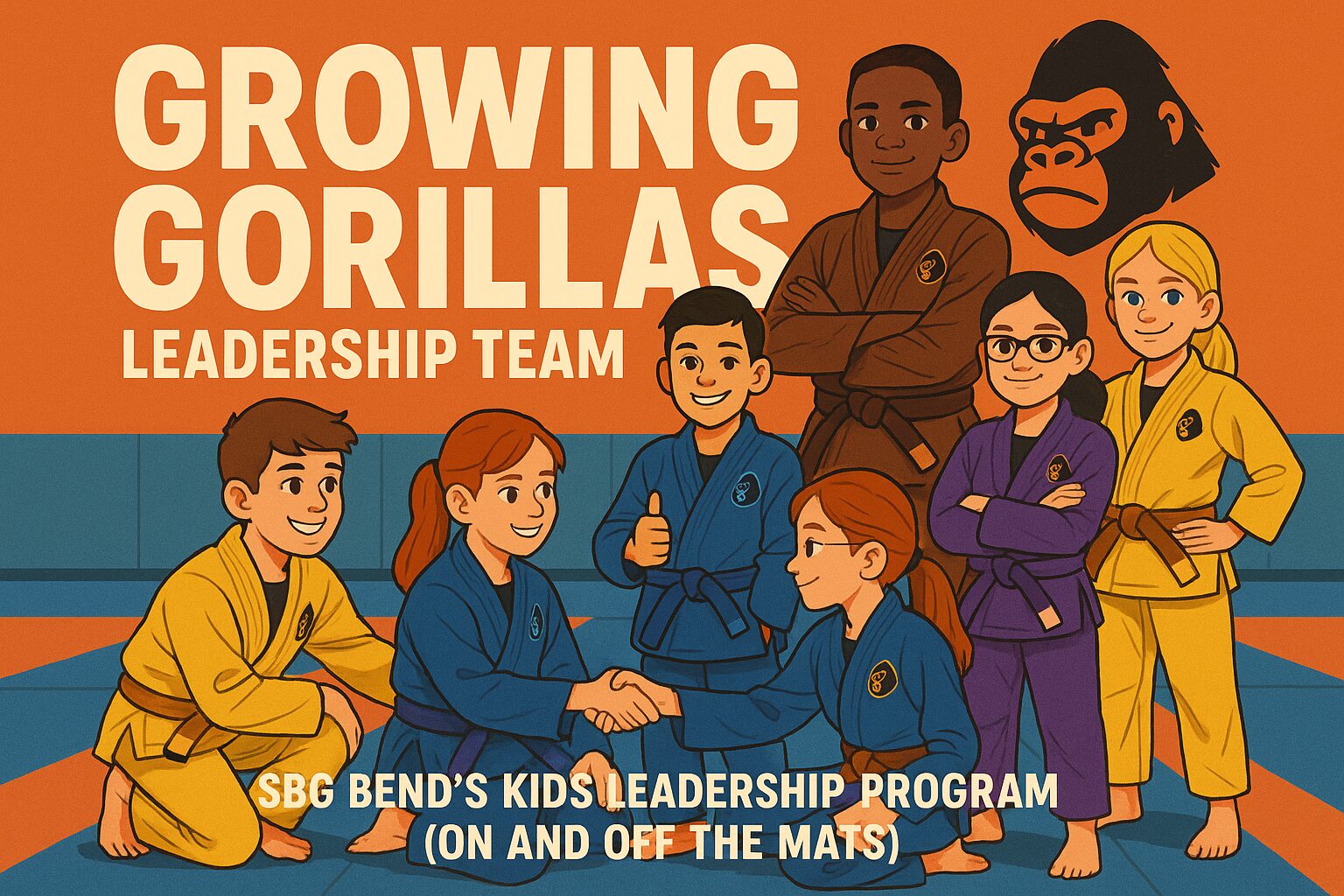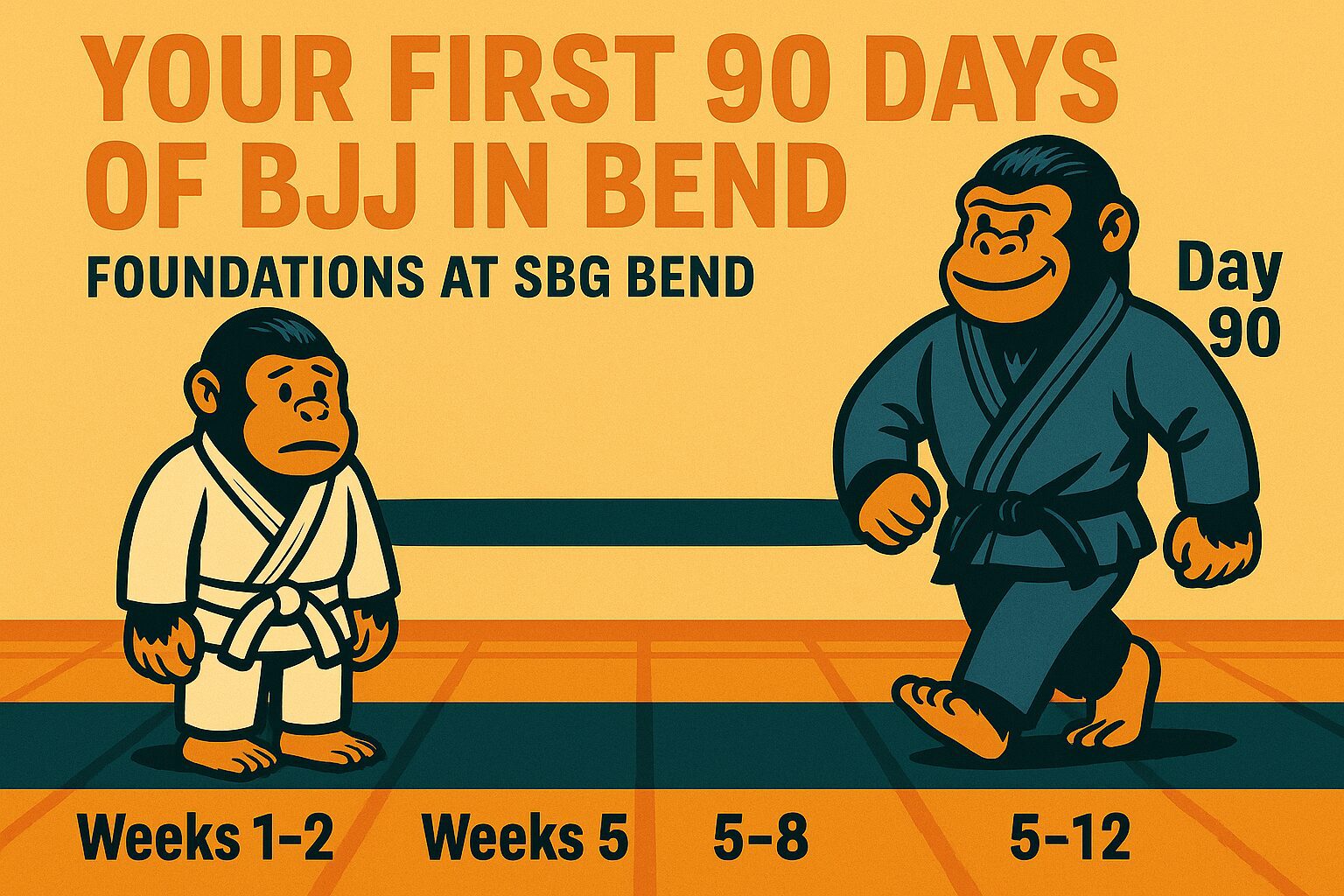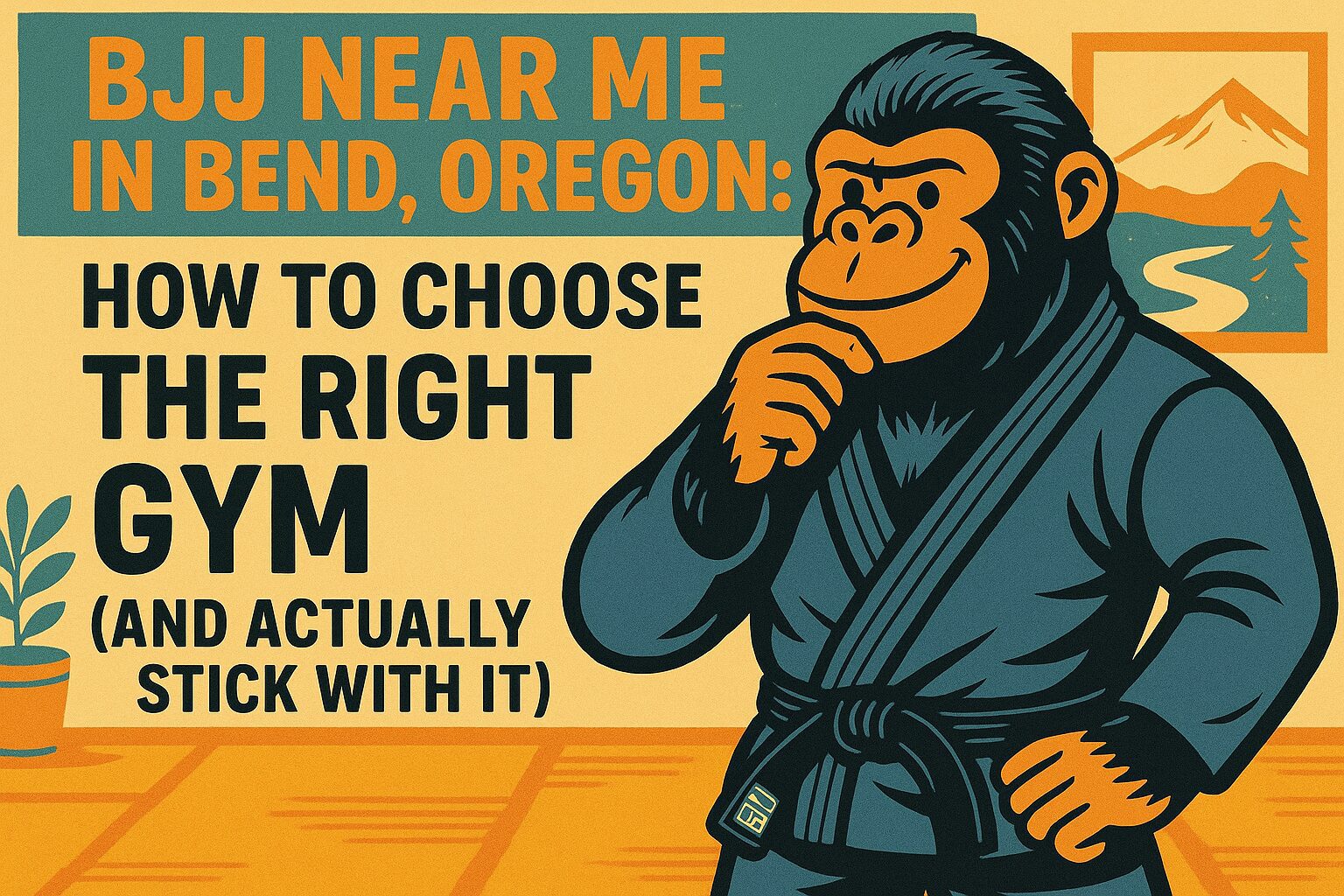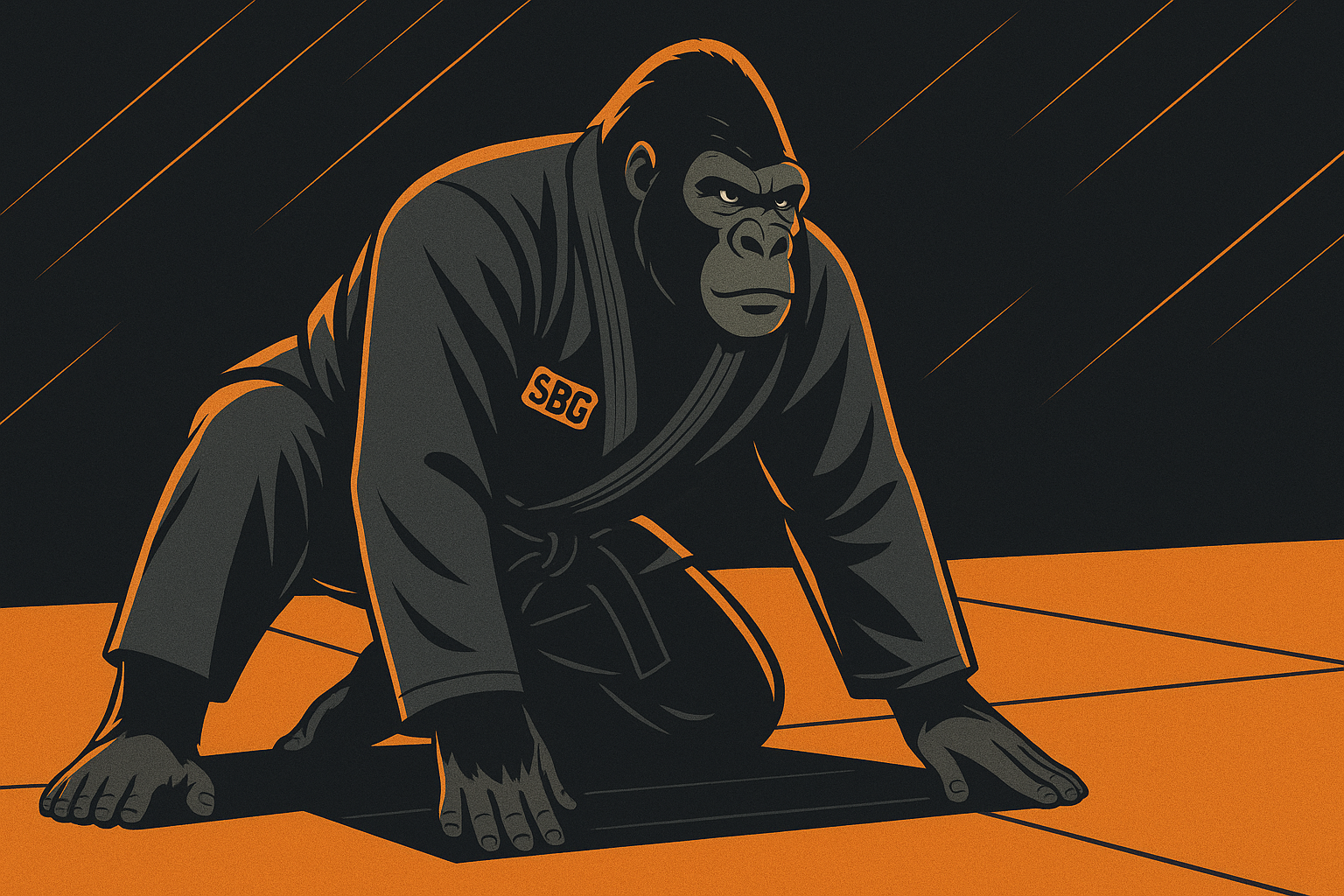
At SBG Bend, one word you’ll hear constantly is “fundamentals.” But what do we really mean by that? In many Brazilian Jiu-Jitsu (BJJ) circles, fundamentals are thought of as just the simple moves taught to beginners—a curriculum of basic techniques you “graduate” from as you advance. This is a major misconception we’d like to clear up. When we at SBG talk about fundamentals, we’re not referring to the most rudimentary or easy moves—we’re talking about the most important aspects of BJJ. In other words, BJJ fundamentals aren’t defined by what’s basic; they’re defined by what’s essential.
Fundamentals form the bedrock of everything that works in Jiu-Jitsu. They’re the universal principles and skill components that underlie all effective technique. In fact, true fundamentals transcend positions, styles, and even generations—they hold true whether you’re in gi or no-gi, whether you’re a 150 lb person or 250 lb, and whether it’s 2025 or 1925. They’re the common ground that every high-level grappler shares. In this post, we’ll dive into what fundamentals really entail according to SBG Bend’s philosophy (heavily inspired by SBG founder Matt Thornton’s approach), why these fundamentals are so critical across all experience levels, and how focusing on them will elevate your Jiu-Jitsu game.
Beyond “Basic Moves”: What Are Fundamentals?
It’s easy to assume fundamentals means a checklist of basic moves—upa escape, scissor sweep, collar choke, etc. While those are important introductory techniques, fundamentals are much deeper. Think of fundamentals as the core concepts and movement patterns that make all those techniques work. They are principles like base, posture, connection, frames, and pressure—the underlying skills that give techniques their effectiveness.
For example, having a solid base (balance and stability) and proper posture (structural alignment) is what allows you to execute a sweep or maintain a guard pass against resistance. Good base and posture are fundamental; the specific sweep or pass you do on top of them is secondary. As Coach Matt Thornton puts it, “the base – posture – connection – and pressure [are what] make everything else within the delivery system work.” In our view, techniques are just vehicles for delivering these core concepts. A fancy guard attack will fail without correct posture or connection; a wild submission attempt means nothing if you lack base and can be toppled easily.
At SBG, we often say our classes are “bigger than just technique.” What does that mean? It means when we teach, we focus on the fundamental principles behind techniques more than on accumulating dozens of new moves. An illustration of this comes from a seminar where two SBG coaches both taught escapes. Rather than showing a random grab-bag of escape tricks, each coach honed in on a specific core movement pattern that powered all the escapes they taught. One coach’s entire session revolved around a single hip movement used in escaping—he showed various escapes, but made it clear the common fundamental movement was the real lesson. The specific techniques were just examples; the root movement was the fundamental to remember. When fundamentals are taught this way, they “transcend any one specific technique,” applying to many scenarios. In short, fundamentals are about concepts and attributes— balance, structure, leverage, pressure—rather than an ever-growing catalog of moves.
Key Fundamental Concepts (with Examples)
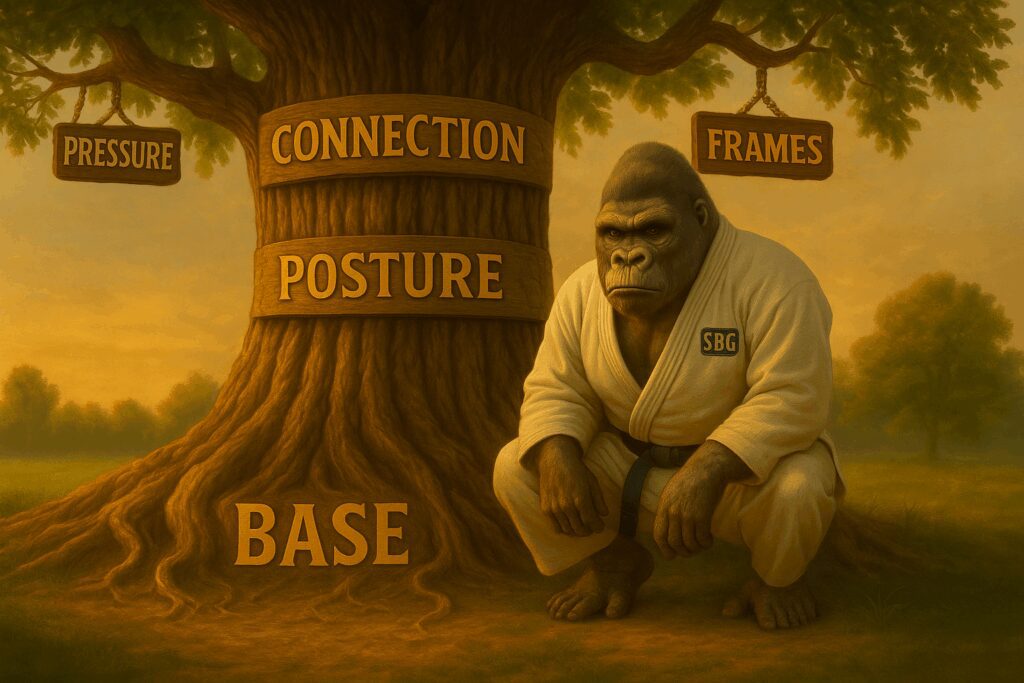
- Base: This refers to your balance and stability on the mat. A solid base means you have a strong stance or posture that’s hard to off-balance. For instance, when standing or passing guard, a good base might mean a wide, low stance with active toes and proper weight distribution. On the ground, base could mean driving through your hips/knees so you can’t be easily rolled. From base you build posture, and from posture you build pressure—base is the foundation everything else stands on. Without it, even a simple bump can send you flying; with it, you feel “heavy,” rooted, and much harder to sweep.
- Posture: Posture is about alignment and structural integrity. In BJJ this often means keeping your spine and limbs in strong positions. If you’re in someone’s closed guard, proper posture would be head up, back straight, elbows in—not slouching forward. Good posture makes you far less vulnerable to sweeps or submissions and lets you generate force efficiently; if it collapses, both defense and offense collapse with it.
- Connection: Connection means maintaining tight, adhesive contact to transfer force efficiently. Good connection is why a smaller person can cling to a bigger opponent like a backpack. It applies in back control and guard alike: if your hips and grips move as a unit with your partner, you gain control. Connection leads to flow; flow leads to leverage and victory.
- Frames: “Frames” use limbs (elbows, forearms, shins, hands) as structural barriers. Framing is a key defensive skill. A rigid forearm across the hip or neck creates space and prevents chest-to-chest pressure. Frames buy time and leverage to escape or reposition; moving away from the frame is a core fundamental of escaping bad spots.
- Pressure: Pressure is the offensive counterpart to frames—using body weight and leverage to pin or fatigue an opponent. Examples include shoulder pressure under the chin from side control or heavy hips in mount. Effective pressure isn’t brute strength but technique, angle, and timing (built on base and posture). Done right, it makes each position count and turns escapes into an uphill battle for your opponent.
Each concept—base, posture, connection, frames, pressure—is a lifelong skill to cultivate. They work in synergy: base and posture allow pressure; frames and posture enable escapes, etc. Focus on these fundamentals and the fancier techniques start to make sense, because you understand the why behind the what.
Not Just for Beginners – Fundamentals at Every Rank
One of the biggest myths in BJJ is that fundamentals are only for white belts. Visit our gym on any given day, and you’ll see that fundamentals are for everyone. In our classes, it’s not unusual to have a mix of brand-new students and seasoned upper belts drilling the same fundamental concept side by side. Why? Because advanced practitioners know that improving your fundamentals will improve your entire game, no matter how long you’ve been training.
In true SBG fashion, we often run sessions that aren’t split by belt rank, specifically so all levels can train fundamentals together. A beginner might be learning a concept for the first time, while a brown belt in the same class is polishing that concept at a deeper level—and both are getting value. We’ve seen champion competitors and fresh white belts alike have “light-bulb” moments during a fundamental movement drill. An advanced student might catch one detail about their posture or base that they never realized before, suddenly making a technique feel effortless. A newer student might simply grasp how to not feel so off-balance by adjusting their base. In both cases, that’s a leap forward in skill. This shared focus on fundamentals creates a learning environment where everyone improves together. It’s not about who knows more moves; it’s about sharpening the foundation for all our moves.
Another common misconception is that fundamentals are boring or that training them is a chore compared to flashy new techniques. In reality, when you dive into the nuances of fundamentals, they are endlessly fascinating—and absolutely key to progress. There’s a saying we like: “Advanced techniques are just basics mastered.” If you watch high-level black belts roll, you won’t see a circus of never-before-seen moves. You’ll mostly see very crisp execution of fundamental movements—often the same guard passes and escapes you learn as a beginner, refined to a world-class level.
At SBG Bend we remind students that mastery comes from depth, not breadth. Getting better doesn’t mean abandoning fundamentals in favor of fancy moves— it means drilling those fundamentals even more precisely. Our founder, Matt Thornton, often addresses this misconception head-on. He notes that some coaches shy away from teaching fundamentals because they worry students will get bored or always crave something new. But that’s an excuse. In truth, if fundamentals are taught well, students are never bored by them—they actually love feeling and understanding the improvements in their game. The excitement of a “new detail on an old move” can rival tapping someone with a flashy submission. As Matt Thornton quips, if you want the latest trendy technique, you can find it on YouTube anytime—but if you want to discover a crucial detail about your base or posture that even decades of experience might have missed, that requires real focus on fundamentals. In other words, the real aha! moments in Jiu-Jitsu often come not from adding more techniques, but from sharpening the core fundamentals that make those techniques work.
To illustrate just how far fundamentals can take you, consider a well-known anecdote from the BJJ world. Rickson Gracie—regarded by many as one of the greatest BJJ practitioners ever—was famous for dominating high-level opponents using extremely fundamental Jiu-Jitsu. Coaches in SBG have pointed out that young, athletic world champions in their 20s would find themselves repeatedly tapping out to Rickson, who was in his 40s and dealing with injuries—not because he had secret fancy moves, but because his base, posture, connection, and pressure were on another level. This encapsulates a powerful lesson: athleticism and a huge arsenal of techniques might carry you far, but rock-solid fundamentals will still prevail in the end. A fighter who has built “a sturdier foundation” will expose and overcome someone who has relied on speed or novelty without the same depth of fundamentals. We’ve seen this in our own training room too—when higher belts roll with newer folks, it’s the fundamentals like balance, pressure, and frame recovery that create a clear gap, not some secret techniques.
A Lifelong Journey of Mastering Fundamentals
Perhaps the most beautiful (and challenging) thing about fundamentals is that you’ll never truly be “done” learning them. Mastering fundamentals is a lifelong pursuit. That might sound daunting, but it’s actually liberating—there is always room to grow deeper, and training never gets dull. Even our black-belt coaches continue to refine their fundamentals year after year. For example, SBG’s Coach John Frankl (a BJJ black belt for many years) once taught a seminar at SBG HQ on basic head-lock escapes. You might think a head-lock escape is a day-one white-belt lesson that a veteran black belt has done a thousand times. Yet, when our founder Matt attended this class, he came away with new details that “instantly changed how [he’d] taught something for over twenty years.” After 24 + years on the mats, he still had a breakthrough on a fundamental technique! That’s how deep the rabbit hole goes. Rather than being discouraging, this is inspiring—it means Jiu-Jitsu always has another layer to reveal. As long as you stay curious about the fundamentals, you will keep improving, whether you’re on year 1 or year 20 of training.
We often tell our students: fundamentals are simple, but they are not easy. Anyone can grasp the idea of maintaining posture or using frames, but performing them excellently against resistance is a skill honed over time. You polish fundamentals through repetition, feedback, and rolling (what we call “alive” training). Each roll on the mat is an opportunity to test your base, your balance, your connection—did you lose posture and get swept? Did you forget to frame and get smothered? That feedback guides you on what to adjust. Bit by bit, your fundamentals grow sharper and more automatic. And here’s the kicker: with fundamentals, the learning never ends—it just grows in precision. Every tiny improvement in a fundamental (an inch-better hip movement, a slight timing tweak on your frame) can open up a huge change in effectiveness. This is why we encourage everyone to embrace the mindset of being a forever student of the fundamentals.
Embracing Fundamentals at SBG Bend
At SBG Bend, our entire coaching approach is built around these core truths. We don’t separate “beginner Jiu-Jitsu” and “advanced Jiu-Jitsu” as completely different animals—it’s all one art, anchored by fundamentals. Our Foundations classes introduce fundamental movements and concepts from day one, and our advanced classes continue to drill those same fundamentals at higher levels of pressure and sophistication. You’ll frequently hear our coaches cue things like “find your base,” “posture up,” “build a frame,” or “drop your pressure” during training. These reminders highlight that, no matter how many techniques you learn, success comes back to how well you execute the fundamentals within those techniques.
Fundamentals are truly the great equalizer and unifier in BJJ. They allow a smaller person to control a bigger person, an older practitioner to survive against a younger, explosive opponent, and anyone to transition smoothly between positions while creating their own style of game. When you focus on fundamentals, you’re essentially learning how to learn Jiu-Jitsu at its deepest level. The fancy moves will come and go (and yes, they can be fun), but fundamentals will always be your reliable tools. As one SBG coach wisely said, “fundamentals, done properly… define what efficiency in fighting looks like.” They make your Jiu-Jitsu efficient, effective, and adaptable.
Closing Thoughts
The true meaning of “fundamentals” in Brazilian Jiu-Jitsu goes far beyond beginner techniques—it’s about the core principles and skills that underpin everything in the art. By viewing fundamentals as “what’s important” rather than “what’s basic,” you set yourself up for success at every stage of your journey. Remember: every black belt is simply a white belt who refined the fundamentals to a black-belt level. There are no secret shortcuts or magic tricks—just a deeper and deeper understanding of base, posture, connection, pressure, frames, timing, and so on. The good news is that this journey of continuous improvement is incredibly rewarding.
Whether you just started training or have been on the mats for years, make fundamentals your focus. Drill them, play with them, and seek to understand them in every position. Ask your coaches about the “why” behind techniques—chances are it will come back to a fundamental concept. We at SBG Bend are here to guide you in that process. Our tribe’s philosophy is that fundamentals are for everyone, and you can never get enough of them. Embrace that mindset and you’ll find your Jiu-Jitsu growing in ways you never imagined—while staying fun and fresh for years to come. After all, when your foundation is solid, everything you build on top is stronger. Keep at it, and enjoy the lifelong journey of mastering the fundamentals of BJJ!
Sources
- Matt Thornton – “A Fundamental is What Is Most Important.” mattthornton.org
- Matt Thornton – “Revolution, Evolution, & Fundamentals.” mattthornton.org
- SBG Edmonton Seminar Notes – “What Is a Fundamental?” sbgrossendale.com

